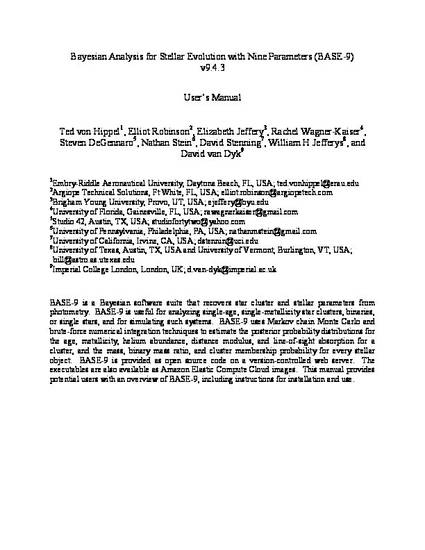
BASE-9 is a Bayesian software suite that recovers star cluster and stellar parameters from photometry. BASE-9 is useful for analyzing single-age, single-metallicity star clusters, binaries, or single stars, and for simulating such systems. BASE-9 uses Markov chain Monte Carlo and brute-force numerical integration techniques to estimate the posterior probability distributions for the age, metallicity, helium abundance, distance modulus, and line-of-sight absorption for a cluster, and the mass, binary mass ratio, and cluster membership probability for every stellar object. BASE-9 is provided as open source code on a version-controlled web server. The executables are also available as Amazon Elastic Compute Cloud images. This manual provides potential users with an overview of BASE-9, including instructions for installation and use.
Available at: http://works.bepress.com/ted-vonhippel/38/